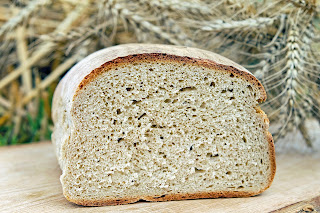3 Types Of Bread: What's The Difference? Benefits & Disadvantages
Bread is a staple in many cultures around the world. It's been around for centuries and is beloved by many for its versatility and taste. But not all bread is created equal. In fact, there are many different types of bread, each with its own set of benefits and disadvantages. In this blog post, we'll take a look at three of the most popular types of bread: whole wheat, white, and sourdough. We'll explore the difference between them and what makes each one unique. We'll also discuss the benefits and disadvantages of each type of bread, so that you can make an informed decision about which one is right for you.
Whole Wheat Bread
Whole wheat bread is made from whole wheat flour, which is milled from the entire wheat kernel. This type of flour contains all of the grain's natural nutrients, including fiber, protein, vitamins, and minerals.
The benefits of eating whole wheat bread include:
1. Whole wheat bread is a good source of fiber.
2. Whole wheat bread has a lower glycemic index than white bread, meaning it won't cause spikes in blood sugar levels.
3. Whole wheat bread contains more antioxidants than white bread.
4. Whole wheat bread is a good source of vitamins and minerals.
5. Whole wheat bread may help reduce the risk of heart disease and other chronic health conditions.
White Bread
White bread is the most common type of bread. It's made with refined flour, which has had the bran and germ removed. This makes it lower in fiber than whole wheat bread. White bread is also usually made with added sugar and fat.
While white bread is often criticized for being unhealthy, it can be a part of a healthy diet. When choosing white bread, look for brands that are made with whole grains and have no added sugar.
Rye Bread
Rye bread is a dark, dense bread that is made with rye flour. It has a slightly sour taste and is often used for making sandwiches or as a base for canapés. Rye bread is high in fiber and low in gluten, which makes it a good choice for people with celiac disease or gluten sensitivity. However, because it is so dense, rye bread can be difficult to digest for some people.
The Benefits of Bread
Bread is a staple in many diets around the world. It’s inexpensive, versatile, and filling. But not all breads are created equal. In this article, we’ll take a look at the different types of bread, their benefits and disadvantages, and which one is best for you.
Whole wheat bread is made from flour that contains all three parts of the wheat kernel: the endosperm, bran, and germ. Because it contains the germ, it has more vitamins and minerals than white bread. Whole wheat bread also has more fiber, which can help with weight loss and digestion.
However, some people find that whole wheat bread is heavier and harder to digest than white bread. If you have trouble digesting wheat or gluten, you may want to avoid whole wheat bread.
White bread is made from flour that has been milled to remove the bran and germ. This process makes white bread lighter and softer than whole wheat bread. White bread also has a longer shelf life than whole wheat bread.
But because whitebread doesn’t contain the bran or germ, it lacks some of the nutrients found in whole wheat bread. Whitebread also has a high glycemic index, which means it can cause spikes in blood sugar levels. If you have diabetes or are trying to lose weight, you should avoid whitebread.
The Disadvantages of Bread
There are a few disadvantages to bread that are worth mentioning. First, bread is high in carbohydrates, which can be a problem for people who are trying to lose weight or manage their blood sugar levels. Second, bread can be high in calories, so it's important to watch portion sizes if you're trying to control your weight. Finally, some people may be allergic or sensitive to wheat or other ingredients in bread, so it's important to check labels carefully before eating.
Conclusion
There are all sorts of breads out there, and it can be tough to keep them straight. But once you know the difference between the three main types of breads – whole wheat, white, and rye – it'll be a lot easier to make the right choice for your meal. Each type of bread has its own set of benefits and disadvantages, so it's important to know what you're looking for before you make your purchase. Whole wheat bread is packed with nutrients and fiber, while white bread is less nutritious but often more affordable. Rye bread is a good option for those who are looking for a hearty, filling option that still has some health benefits. No matter which type of bread you choose, enjoy it in moderation as part of a balanced diet.



No comments: